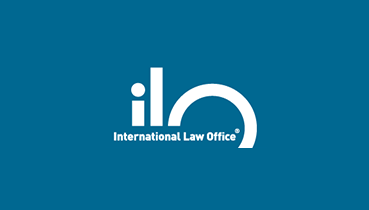Volkswagen emissions scandal: Supreme Court refers questions to ECJ
Author: Rouzbeh Moradi
On 17 March 2020 the Supreme Court decided to refer certain important questions regarding the Volkswagen emission manipulation scandal (widely known as ‘diesel gate’) – which was initially revealed in September 2015 by the US Environmental Protection Agency – to the European Court of Justice (ECJ) for a preliminary ruling under Article 267 of the Treaty on the Functioning of the European Union (TFEU) (OGH 10 Ob 44/19x).
Facts
In 2013 the plaintiff, an individual consumer, purchased a vehicle from the first defendant, a car dealer in Austria, which had been produced by the second defendant, a vehicle producer. The vehicle was equipped with a switch-over device which could detect when a vehicle was being tested in a laboratory and would subsequently activate its emissions control system. The emissions control system would then reduce the vehicle’s emissions in order to match the relevant compliance standards. However, the switch-over device would deactivate the emissions control system outside a laboratory setting, allowing the vehicle to produce emissions above the compliance standards.
When the switch-over device was discovered, the German Federal Motor Transport Authority (KBA) – the authority responsible for granting EC type approval for the vehicle in question – allowed the second defendant to remedy the fault in the affected vehicles. In response, the second defendant introduced a software update to the emissions control system, deactivating the switch-over device to ensure that the faulty vehicles would activate their emission-reducing modes while driving. The software update was approved by the KBA on 20 December 2016 and retroactively fitted in the plaintiff’s vehicle on 15 February 2017. However, the emission-reducing mode was fully operational only when the outside temperature was between 15 and 33 degrees Celsius (the ‘thermal window’).
The plaintiff claimed for damages against the second defendant and a repayment of the purchase price in exchange for returning the vehicle to the first defendant. The plaintiff argued that due to the switch-over device, the technical features of the purchased vehicle did not correspond to those set out in the purchase contract and that the existence of the switch-over device and accompanying software update did not comply with the relevant EU law. The defendants argued that as the software update complied with all of the relevant EC regulations, the plaintiff was not entitled to damages for any of its claims.
Decisions
The first-instance court held that the software update merely remedied an originally existing fault in the vehicle and thus dismissed the claim. The appeals court upheld the first-instance court’s decision and denied the subsequent appeal.
In reviewing the appeals court’s decision, the Supreme Court held that the existence of the switch-over device had rendered the vehicle defective at the time of purchase. Further, the Supreme Court reasoned that if the KBA had been aware of the switch-over device, it would not have granted the concerned vehicle an EC type approval; the court thus held that the approval given by the KBA was invalid.
The question before the Supreme Court was whether the switch-over device and subsequent software update constituted an inadmissible construction part under the relevant EU regulations. Therefore, in this instance, the assessment of non-conformity of the construction part (ie, the switch-over device) was instrumental in determining the second defendant’s liability.
Thus, the Supreme Court decided to halt the proceedings and refer the case with the following questions to the ECJ for a preliminary ruling under Article 267 of the TFEU:
- Is a vehicle seller obliged to ensure only that a vehicle being sold is EC type approved or must it also ensure that the vehicle in question does not include a faulty non-EC approved construction part (in this instance, the switch-over device)?
- Do the switch-over device and subsequent software update to reduce emissions in the thermal window constitute a construction part that is impermissible under EC regulations and is further testing required to grant EC type approval?
- Under what conditions may a buyer request a reversal of the original purchase contract?(1)
Comment
The Supreme Court’s assessment of the case and its decision to refer it to the ECJ for a preliminary ruling have revealed other aspects of the Volkswagen emission manipulation scandal and opened the door for a decision by the ECJ which could alter the course of similar pending cases before national courts in Europe.
Endnotes
(1) The Supreme Court’s questions have been summarised. The full questions are available here (in German).


